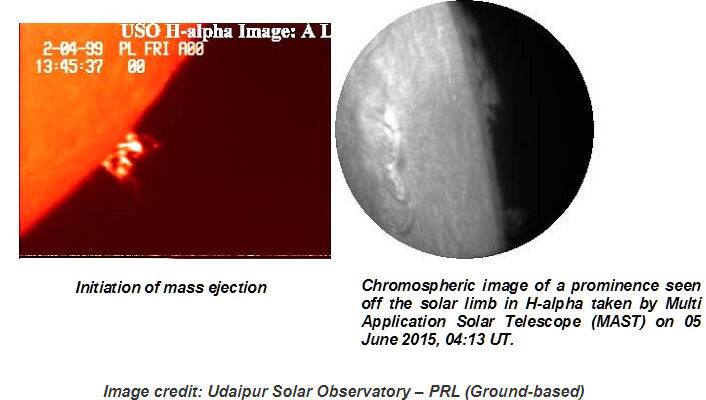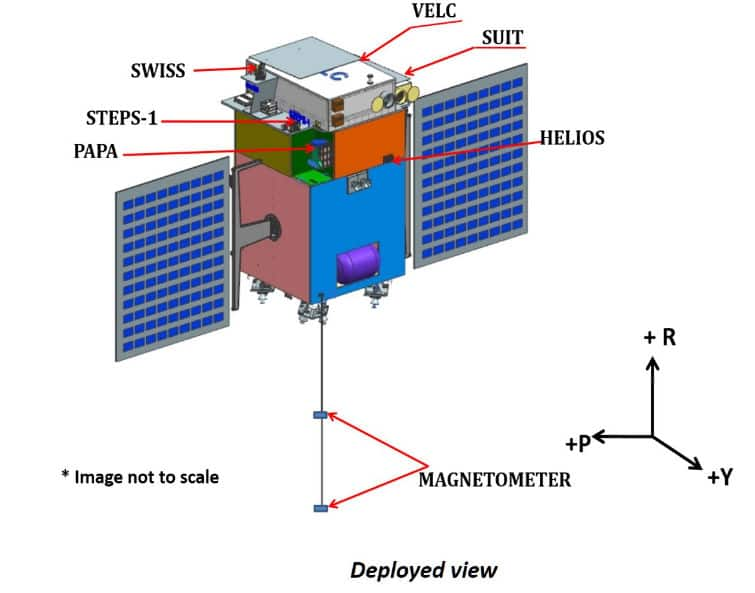After Chandrayaan-2, here's all you need to know about ISRO's sun mission Aditya-L1
Through Aditya-L1, India is all set to study the sun for the first time. As per a statement on ISRO's website, Aditya-L1, initially coined as Aditya-1, was conceived as a 400kg class satellite carrying one payload, the Visible Emission Line Coronagraph (VELC) and was planned to launch in a 800 km low earth orbit.
New Delhi: The Indian Space Research Organisation (ISRO) is all set to study the sun through its mission Aditya-L1. The space agency plans to launch it by 2020. However, a specific date hasn't been set as of yet.
Through Aditya-L1, India is all set to study the sun for the first time.
As per a statement on ISRO's website, Aditya-L1, initially coined as Aditya-1, was conceived as a 400kg class satellite carrying one payload, the Visible Emission Line Coronagraph (VELC) and was planned to launch in a 800 km low earth orbit.

A satellite placed in the halo orbit around the Lagrangian point 1 (L1) of the sun-earth system has the major advantage of continuously viewing the sun without any occultation/eclipses. It will be inserted in a halo orbit around the L1, which is 1.5 million km from the earth. The satellite carries additional six payloads with enhanced science scope and objectives.
Aditya-L1's ojective is to study the outer layer of the sun, the corona, which has a temperature of more than a million degree Kelvin. It is much higher than the solar disc temperature of around 6000K.
The motive of Aditya-L1 is the know why the corona gets heated to such high temperature.
ISRO says that Aditya-L1 with additional experiments can now provide observations of sun's photosphere (soft and hard X-ray), Chromosphere (UV) and corona (Visible and NIR).
Here is a list of all components of the Aditya-L1:
- Visible Emission Line Coronagraph (VELC)
- Solar Ultraviolet Imaging Telescope (SUIT)
- Aditya Solar wind Particle Experiment (ASPEX)
- Plasma Analyser Package for Aditya (PAPA)
- Solar Low Energy X-ray Spectrometer (SoLEXS)
- High Energy L1 Orbiting X-ray Spectrometer (HEL1OS)
- Magnetometer
The Aditya-L1 project will enable a comprehensive understanding of the dynamical processes of the sun and address some of the unanswered questions in solar physics.

(Image Credit: ISRO)
Two weeks ago, ISRO launched Chandrayaan-2, the space agency's moon mission. Chandrayaan-2's lander (Vikram) was just 2.1 kilometers away from scripting history when it lost contact with ISRO. Vikram was to land on the south polar region of the moon, where no country has ever gone before.
The location of the Vikram Lander, which is is carrying the rover (Pragyaan), was later found by ISRO, but communication with it is yet to be established. ISRO also added that the lander is intact as a 'single-piece' and not broken into pieces.
Chandrayaan-2 was India's first attempt at landing a spacecraft on the moon. Before India, only the US, Russia and China have managed to place a spacecraft on the moon so far.
Stay informed on all the latest news, real-time breaking news updates, and follow all the important headlines in india news and world News on Zee News.
)
